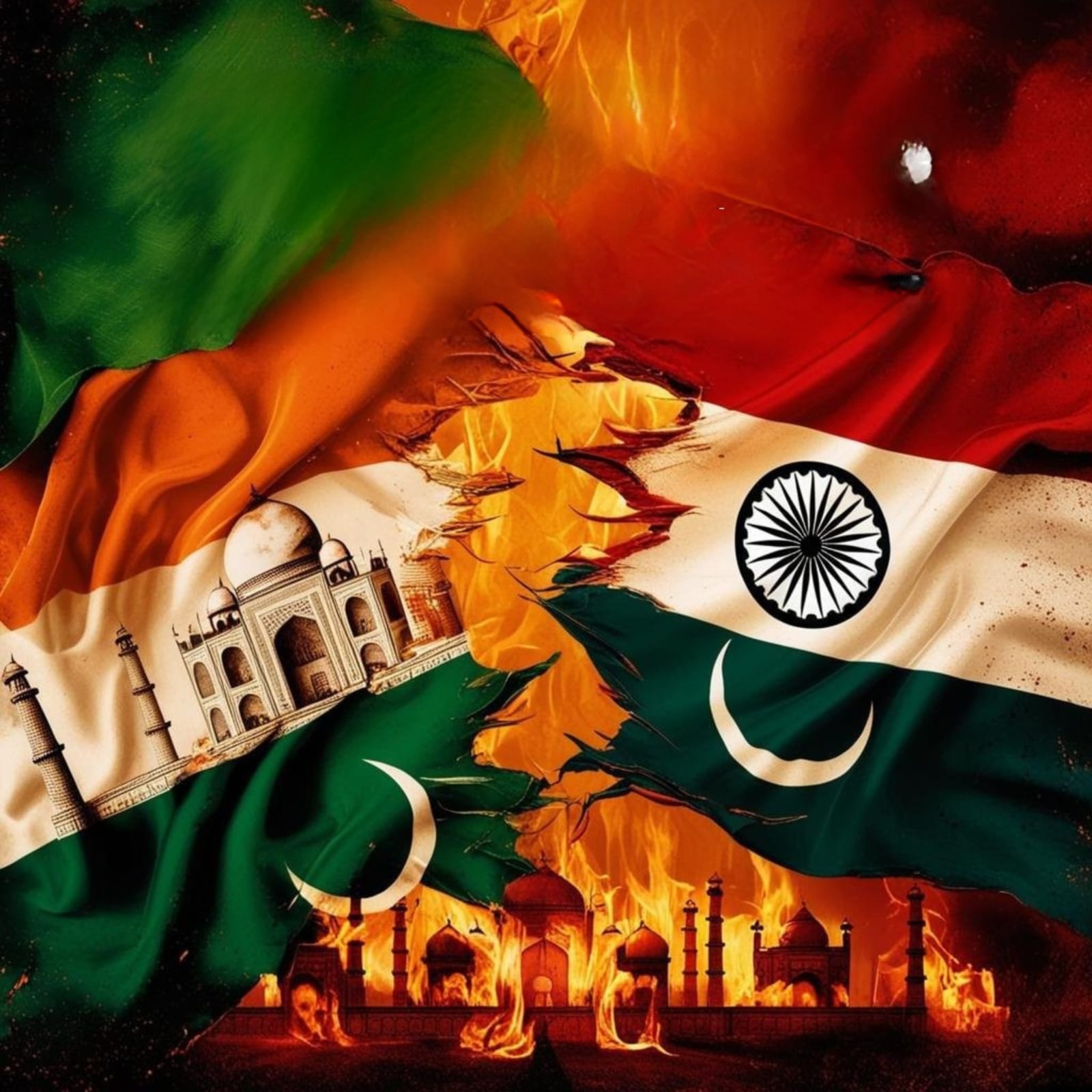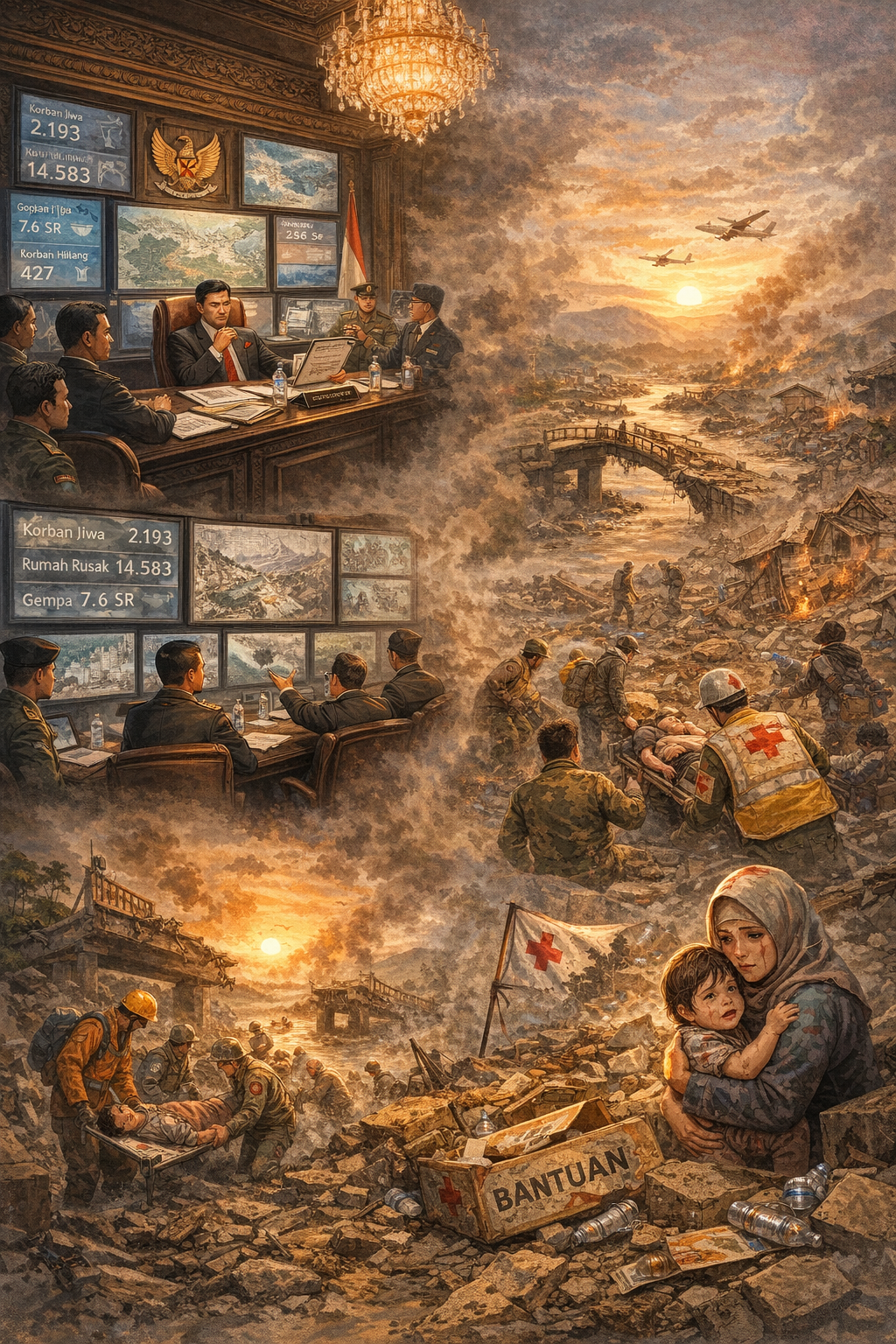Gia Ayu Fita
Universitas Sulawesi Barat
giaayufita@unsulbar.ac.id
Every year, the world hopes that India and Pakistan might finally chill, sit down, and bury the hatchet. But nope, 2025 came around and crushed that dream again. May 2025 made one thing painfully clear: the rivalry between these two nuclear-armed neighbors is still alive and kicking… and now it’s upgraded, more dangerous than ever.
It all kicked off with a brutal attack in Pahalgam that left 28 civilians dead, mostly Hindu tourists. India didn’t hold back, pointing fingers at Pakistan-based militant groups (Hussain, 2025). The response? Operation Sindoor, India went full throttle, launching airstrikes, missiles, drones, and artillery on nine targets across Pakistan and Pakistan-controlled Kashmir. Things got loud, fast. Even after the U.S. stepped in and brokered a ceasefire, both sides kept flinging accusations and bullets. Kashmir’s border didn’t exactly go quiet.
Fast forward to the present, yes, still May 2025 and tensions remain high. Although a ceasefire agreement is technically in effect, it exists mostly on paper. In reality, violations continue to occur frequently on both sides, especially along the Line of Control, where clashes and accusations are still part of the daily routine (Aftab Ahmed, 2025). India has gone into full security mode, ramping up military presence and tightening controls across sensitive regions like Kashmir and Punjab. On the other side, Pakistan is leaning heavily on its strategic alliances, like getting closer with China through joint military exercises and strengthening its ties with Gulf states.
Meanwhile, a different kind of battle is playing out online. Nationalist sentiment is spiking across social media, with both governments tapping into the tension to fuel patriotic narratives. Each side is using the conflict not just as a security matter, but as political capital. In India’s case, the timing is no coincidence, with state elections on the horizon, nothing rallies domestic support quite like a flare-up on the border.
So, What’s the Foreign Policy Game Plan for These Two Countries?
Let’s break it down.
India is playing the role of anassertive regional power[1]. Its main foreign policy moves these days? The “Neighbourhood First” and “Act East Policy” (Sikri, 2009) (Affairs, 2020). That means it’s trying to build better ties with its neighbors and boost partnerships with countries in Southeast and East Asia. But when it comes to Pakistan? Totally different vibe. India’s taking a tougher, no-nonsense stance. Under PM Modi, hard diplomacy is the name of the game; especially in the Indo-Pacific. India’s doubling down on alliances with big players like the U.S., Japan, and Australia through the Quad (Institution, 2019). Ironically, the current conflict with Pakistan gives India even more ammo to rally international support and reinforce its narrative on cross-border terrorism. India’s also turning up the heat in global forums, G20, SCO, BRICS, you name it. But when Pakistan shows up? India keeps its distance.
Now, over to Pakistan.
After going through an economic rollercoaster and IMF pressure, Pakistan is leaning hard into its ties with China and the Islamic world. The China-Pakistan Economic Corridor (CPEC) is a huge deal, and Pakistan’s tightening its grip on diplomacy with the OIC (Organization of Islamic Cooperation) too(Torode, 2025). Pakistan’s also going global with its messaging, trying to internationalize the Kashmir issue, especially at the UN and Human Rights Council. It’s in a bit of a defensive posture right now, but it’s not quiet. Instead of going all in on hard power, Pakistan’s playing the soft power card: tapping into its diaspora networks, using international media, and working low-key military cooperation angles to push back on India’s narrative.
So, what’s next?
Worst-case scenario? A drawn-out, open conflict. Constant ceasefire violations in Kashmir. Things could spiral fast, maybe international intervention, or worse… we’re talking nuclear-level tension.
Most likely? The fire will cool off in a few weeks, not because anyone’s made peace, but because both sides know how far they can push without blowing things up completely. The Line of Control will stay tense, there were already explosions in Srinagar and artillery exchanges recently. And of course, the blame game will continue on social media.
Diplomatic Outlook? We’ll probably go back to a classic cold peace, no bullets flying (for now), but the ice between them stays thick. As long as the real issues, like Kashmir, cross-border terrorism, and deep diplomatic mistrust, aren’t addressed seriously, this conflict is just on pause, not over.
The India–Pakistan conflict isn’t just about two countries that can’t get along. It’s the real-life playbook of classical realism, a world shaped by fear, where states trust only one thing: POWER (Waltz, 1979) (Moergenthau, 1948). There’s no room for trust, just strategy, national interest, and cold calculation. When India steps up its military patrols, Pakistan braces for impact. Pakistan responds, and India sees it as provocation (Basrur, 2001). And on it goes, like a broken record stuck on repeat.
This is what political scientists call a security dilemma, a never-ending loop of action and reaction driven by mutual suspicion (Jervis, 1978) (Mearsheimer, 2001). As long as both sides remain trapped in old mindsets without the courage to rethink the structure of their relationship, this conflict will never truly end.
What we’re witnessing now is war rebranded. It’s no longer just tanks and bullets, it’s drones in the sky, propaganda on screens, and opinion warfare on social media. The same old storyline à who started it, who’s right à now dressed in the sleek packaging of modern tech and diplomatic pressure. The format may have changed, but the plot remains the same: two nations still haunted by a past they haven’t resolved.
“An unfinished war will always find a reason to start again.”
Footnote:
[1] Assertive Regional Power refers to a state that actively and confidently asserts dominance in its surrounding region—whether through diplomacy, military strength, economic influence, or political leadership.
[2] The Line of Control (LoC) is not an official international border, but rather a military demarcation line that divides the region of Kashmir into two parts: Jammu and Kashmir under Indian administration, and Azad Kashmir and Gilgit-Baltistan under Pakistani control.
References:
Affairs, M. o. (2020). Government of India. Retrieved from https://www.mea.gov.in/Images/CPV/LS97_00.pdf
Aftab Ahmed, S. P. (2025, May 12). Reuters. Retrieved from NEWS: https://www.reuters.com/world/asia-pacific/military-officials-india-pakistan-discuss-next-steps-india-says-ceasefire-holds-2025-05-12/
Basrur, R. (2001). Nuclear Deterrence and Conflict in South Asia. Journal of Peace Research, 38(5), 465-483.
Hussain, I. H. (2025, May 12). AP News, World News. Retrieved from World News: https://apnews.com/article/pakistan-india-ceasefire-kashmir-f632f963d29b75d6bd71e6836e8cdbed
Institution, B. (2019). Retrieved from https://www.brookings.edu/wp-content/uploads/2019/10/Acting-East-India-in-the-INDO-PACIFIC-without-cutmark.pdf
Jervis, R. (1978). Cooperation under the security dilemma. World Politics, 30(2), 167-214.
Mearsheimer, J. (2001). The Tragedy of Great Power Politics. New York: W.W. Norton & Company.
Moergenthau, H. J. (1948). Politics Among Nations: The Struggle for Power and Peace. New York : Alfred A. Knopf.
Sikri, R. (2009). India’s foreign policy: Coping with the Changing World. New Delhi: Pearson Education India.
Torode, G. (2025, May 9). Reuters. Retrieved from News: https://www.reuters.com/world/asia-pacific/india-pakistan-conflict-offers-rich-intelligence-opportunity-china-2025-05-09/
Waltz, K. (1979). Theory of International Politics. Addison Wesley.


